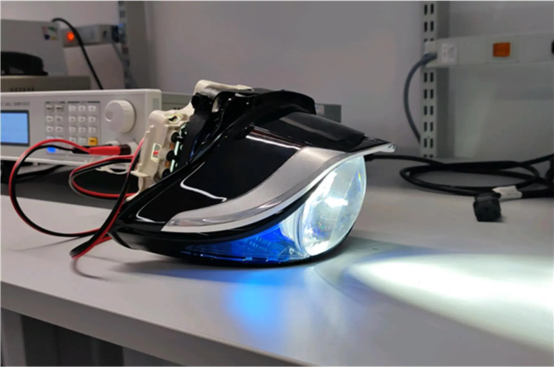The explosion of unusual vehicles has been caused by the quest for electrification within the automotive industry. The old, bulky, single-purpose lights are replaced by slimmer, newer designs that wrap around the car’s sides, front, and back. As a result, future car lights will need to show complex patterns and algorithms and deal with previously unknown thermal management, form factor, and cost constraints.
These new products include adaptive headlights (also known as matrix headlights). This type of headlamp uses an LED matrix to replace traditional light bulbs. It improves thermal efficiency and enhances light beam control. The matrix LEDs can be individually controlled to create creative and captivating designs. This increases driver visibility while adapting the light beams to the surrounding. Headlamps can illuminate the areas that drivers need without disturbing other road users. They do this by turning off unnecessary light sources while keeping the remainder of the area well-lit.
This article will discuss how to select the best LED driver for multibeam headlamps and the challenges faced by electronic engineers when building these new lighting devices. It will also explain how adaptive control feedback (AFC) enhances thermal management. These concepts will be illustrated by designing a multi-beam headlight, from a system overview to LED driver selection.
Matrix headlights
Three main components are used in multibeam headlights: an LED driver and a regulator.
A matrix of LEDs is used to illuminate the road layout. The system described in this article contains 84 LEDs distributed over three rows and thirty columns. This is due to PCB size restrictions and thermal constraints. To adapt the lighting in the environment, LED drivers must control the LEDs. In this example, six MPQ7225AEC1 units were used. The system also incorporates a regulator, which steps down the voltage of the car battery to match the SPD and the LED driver.
specificationsSelecting a LED driver
Two main constraints when designing headlights: the PCB size and thermals. Reducing the number of components in the PCB is essential to make it fit into the case. Lighting designs should also consider the application’s thermals to prevent overheating or damaging elements. Considering these constraints, the LED driver should be selected carefully for the system specs. The MPQ7225AEC1 LED driver was chosen because the system in this article requires excellent scalability and has many channels. This LED driver reduces the number of parts and PCB space without compromising LED controllability. The design utilizes six MPQ7225AEC1 devices for a total of 14 tracks. The MPQ7225AEC1 is a 16-channel LED driver. It can control up to 96 LEDs at a time, but this is unnecessary for this design.
When designing lighting components, the brightness of LED drivers is also an essential factor. In multi-beam technologies, having a sufficient current per channel and a little difference in string-to-string between the tracks is crucial. This will prevent certain parts of the PCB from overheating. MPQ7225AEC1 is a great LED driver to use in such applications. It allows an LED current of up to 200 mA for each channel with an accuracy level of 5% over the entire temperature range. This design was aimed at the headlight’s high beam, so the nominal current per channel was 200 mA.
A configurable current helps to manage the temperature of light boards. LED Driver will dim the LED current to lower the board’s temperature when it reaches its maximum. The MPQ7225AEC1 has two dimming methods: PWM dimming and analog dimming. Each channel can be dimmed independently.
Contributors
Monolithic Power Systems Oster Hsu is an applications engineer. Xavier Ribas is also an applications engineer. Junjian Zhao manages technical marketing and is an applications engineer.

